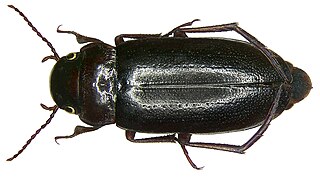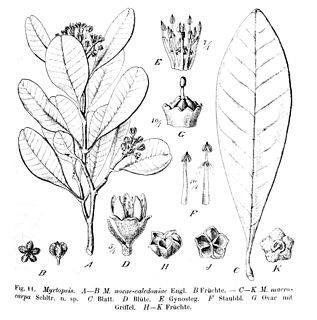
Buttonquail or hemipodes are members of a small family of birds, Turnicidae, which resemble, but are unrelated to, the quails of Phasianidae. They inhabit warm grasslands in Asia, Africa, Europe, and Australia. There are 16 species in two genera, with most species being found in the genus Turnix and only one being found in the genus Ortyxelos.

The japygids are a taxon of hexapods, of the order Diplura, commonly known as forcepstails.

Xenia is a genus of photosynthetic soft marine coral in the family Xeniidae. They resemble a mushroom, with "arms" coming out from the top that end in many-fingered "hands". It is unique among corals because of its ability to use its "hands" to "pulse" or push water away from the colony in a constant, grabbing motion. Common names include fast-pulse Xenia. Species of Xenia are sometimes referred to as pulse corals.
Paracalliope is a genus of amphipod crustaceans that live in Australasia. They include the most common freshwater amphipods in New Zealand, where they are particularly frequent in slow-flowing reaches of rivers. They shelter among weed beds and are important prey items for fish such as the New Zealand smelt, Retropinna retropinna, which are in turn important prey for the freshwater eels Anguilla australis and Anguilla dieffenbachii. Paracalliope acts as an intermediate host for the nematode Hedruris spinigera, which can thus reach their primary host, the eel.

Helcogramma is a genus in the triplefin family Tripterygiidae. The blennies in the genus Helcogramma are found throughout the Indo-Pacific and in the South Atlantic Ocean off the islands of St Helena and Ascension.

Amblyeleotris is a genus of fish in the family Gobiidae found throughout the Indo-Pacific region. This is the largest genus of the shrimp gobies or prawn gobies, so-called because of their symbiotic relationship with certain alpheid shrimps. The shrimp excavates and maintains a burrow used by both animals while the goby, which has far superior eyesight, acts as a lookout for predators. The shrimp maintains almost constant contact with the fish with an antenna. These species vary considerably in size from less than 30 mm to almost 200 mm standard length.
Indjapyx is a genus of diplurans in the family Japygidae.
Ljunghia is a genus of mites in the family Laelapidae.
Helcogramma novaecaledoniae, known commonly as the New Caledonian triplefin, is a species of triplefin blenny in the genus Helcogramma. It was described by Ronald Fricke in 1994. This species is found in the western Pacific Ocean where it has been recorded from New Caledonia, the Loyalty Islands and Guadalcanal.

Carabdytes is a genus of predaceous diving beetles in the family Dytiscidae. Carabdytes upin was formerly the sole species of this genus, but nine species in the genus Rhantus were transferred to Carabdytes as a result of research published by Balke et al. in 2017.

Necterosoma is a genus of beetles in the family Dytiscidae, containing the following species:
Aoupinieta is a genus of moths belonging to the subfamily Tortricinae of the family Tortricidae.
Aoupinieta novaecaledoniae is a species of moth of the family Tortricidae. It was described by Razowski in 2012 and is endemic to New Caledonia.

Myrtopsis is a genus of shrubs in the family Rutaceae. The genus is endemic to New Caledonia in the Pacific and contains c. 8 species.
Indjapyx perturbator is a species of forcepstail in the family Japygidae.
Indjapyx indicus is a species of forcepstail in the family Japygidae.
Indjapyx sharpi is a species of forcepstail in the family Japygidae. It is found in Oceania.
Acryptolaria is a genus of hydrozoans in the family Lafoeidae.

Aneura is a genus of liverworts in the family Aneuraceae.
The blue-mouthed skink is a skink in the. It is monotypic in the genus Caesoris. It is endemic to New Caledonia.








